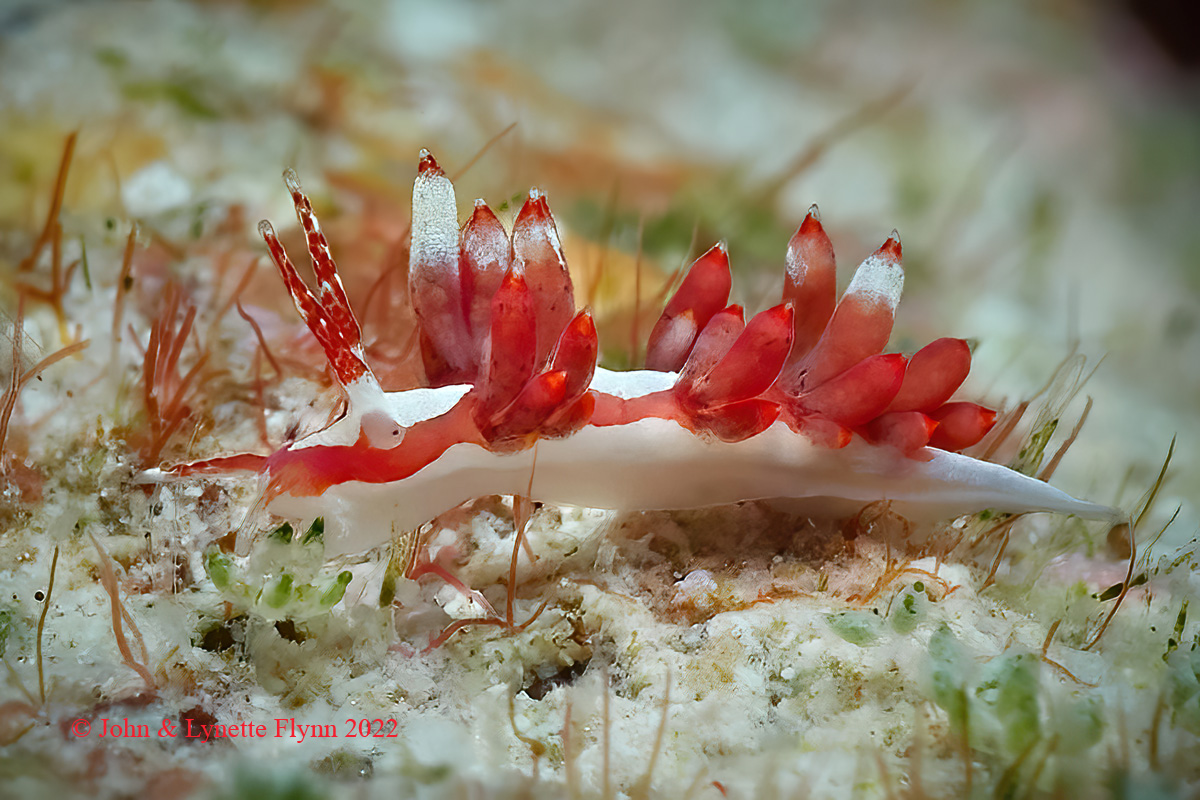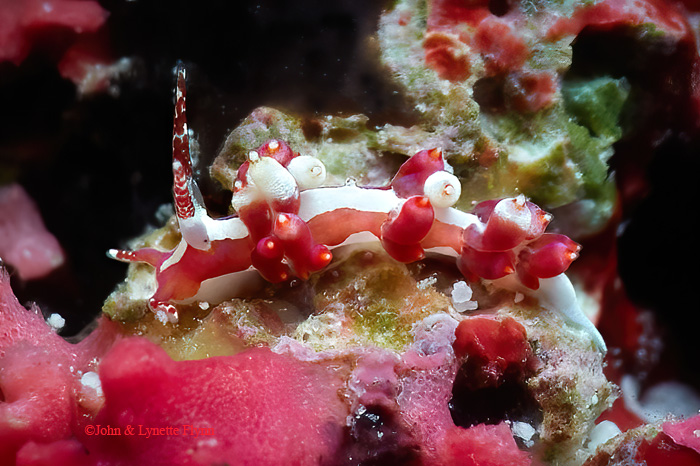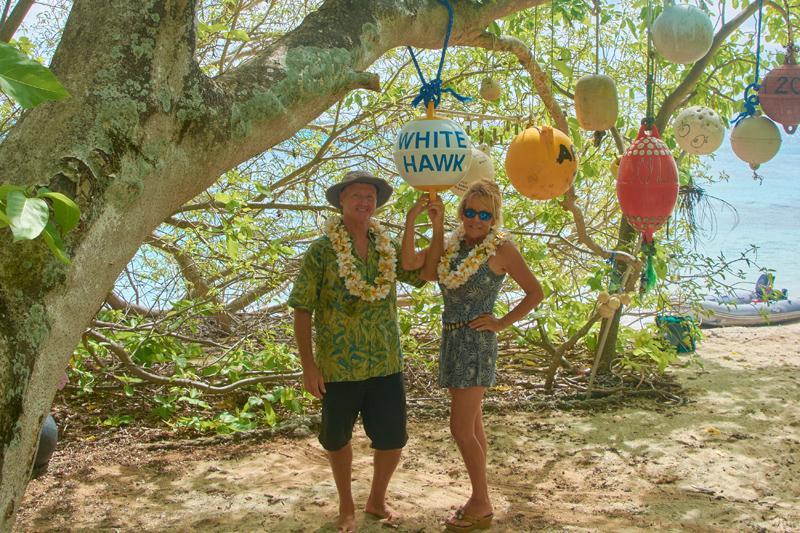 |
Image courtesy of John and Lynette Flynn
Majuro atoll in the Marshall Islands

|
Tenellia sp. 31 (in NSSI 2nd Ed.)
OMG - the kids sailing the Marshall Island's are at it again. Just look at this beauty. Fantastic, and tiny. I want to know more about how they take these amazing photos. The body is opaque white with two broad lateral purple-red bands. The white extends on to the lower portion of the smooth rhinophores, above which is a smattering of red and white. The cerata are bulbous, purple-red in color with a subapical orange-red band. Depending on the specimen, there may be varying amounts of white on the cerata also. A truly amazing beast - all specimens have been found in shallow water and measure up to 7mm in length. Wait until you see what's coming next from these two. Man, I need to go see this wonderland myself. Keep 'em coming kids. Another nice find by the Flynns! Dave Behrens Sammamish, WA 98074 Feb., 2022 Send Dave email at davidwbehrens@gmail.com |
John and Lynette Flynn at the "clubhouse" of the Rongerik Yacht Club.
Rongerik is an uninhabited atoll in the Marshall Islands and to join the club you have to find some debris on the shore,
put your boat name on it, and hang it in the open air clubhouse.

We are John & Lynette Flynn, full time live-aboard cruisers and free-dive photographers who sailed our 46' boat "White Hawk" out of San Diego in 2014 and have been cruising the Pacific ever since. We are currently "stuck" in the Marshall Islands due to COVID border closures, but we have been enjoying our time here hunting nudibranchs and sea slugs in shallow water from 0.5 to 5 meters. Last year we photographed 51 species of Opisthobranch at Rongelap Atoll, and we are currently at over 120 species photographed at Majuro Atoll, including the discovery of what appears to be four previously unknown species of nudibranch. We still shoot other animals but we are now full-fledged "nudiholics." Our motto is: "If you don't go - you don't know. If you don't look - you don't see." We are currently shooting with Sony RX100V's in Nauticam housings with CMC-1 wet lenses, SOLA Video Pro lights, and a single Sea & Sea YS-D3 strobe. We typically process our best images with Capture One 20 Pro and Topaz Labs software. In the past we used less expensive plastic housings and got lots of fuzzy photos due to condensation inside the lens port. The Nauticam aluminum housing ends condensation blur. A nice feature of the RX100V with a CMC-1 lens for nudibranch photography is the extremely close working distance of about 2 inches. This minimizes the amount of water and suspended particulates between the lens and the subject. The RX100 sensor has very high resolution due to extremely high pixel density. To put this in perspective, for a full frame camera to have comparable pixel density, it would need to be a 148 MP camera. Resolution is not everything, but it does matter a lot for tiny macro subjects. We are shooting in manual exposure mode. We find 1/320, f9, ISO 100 with either a strobe or with two SOLA 3800 video lights can give good results. For folks used to shooting a full frame camera with a 1:1 macro lens, f9 will seem like a large aperture for macro photography, but the RX100 only stops down to f11 and f11 creates image noise, so we usually shoot f9 for sharper macro images. This aperture can yield decent depth of field with the RX100 because fully zoomed in with the CMC-1 our resulting magnification (on the sensor) is only 0.4x. That's not what full frame photographers would call macro but the formula works; use a moderate aperture with low magnification and a super-high resolution sensor. Not bad for a little compact!
Send John and Lynette mail at svwhitehawk@yahoo.com |

Attention all you Sluggers, and you know who you are! The NSSI 2nd edition is now available in ebook PDF and book form . The hard back version will become available Nov. 1st. Both will cost $65 (individually). You will need to jump through a few hoops to get the electronic version as pdf distribution is protected by Adobe ID!! Please read the following to enable reading your electronic purchase! This new 2nd Edition is updated and reorganized, including 185 new species. Among other features, the new edition includes additional photographs of species, an identification key, and an up-to-date classification reflecting the latest evolutionary relationships. The Indo-Pacific represents the largest expanse of tropical ocean in the world, stretching from the Indian Ocean coast of southern Africa and the Red Sea to the central Pacific of the Hawaiian Islands, Easter Island and the Marquesas. This region supports the most diverse marine fauna of any place in the world for most groups of marine organisms. The nudibranchs and sea slugs are no exception to this rule; there are about 3,000 described species of these organisms in the world and at least 40% of these have been found exclusively in the Indo-Pacific tropics. This book illustrates 2,138 Indo-Pacific nudibranchs and sea slugs, including many undescribed species.
|

|
